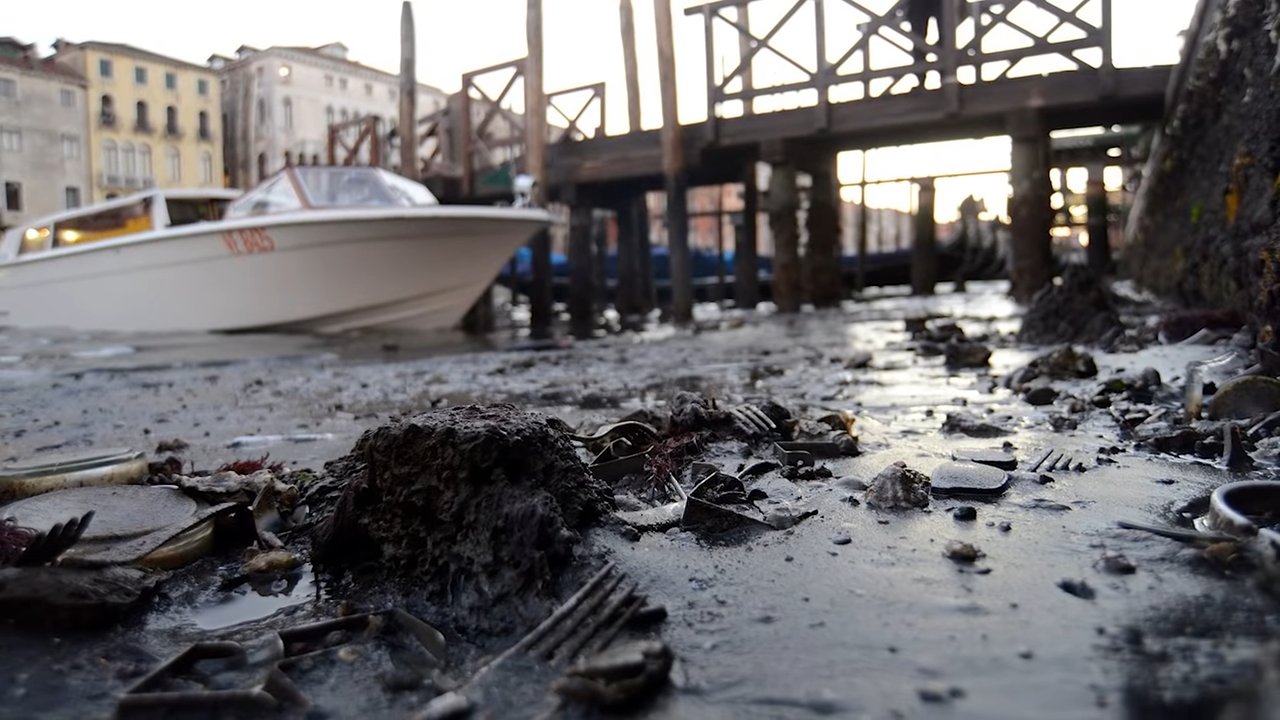Venice is one of the most romantic cities in the world, it is made so by numerous canals and gondolas floating in them with tourists. But lately the picture has been changing more and more often. Few people know, but the main attraction of Venice, the water channels, is endangered. The circumstances are such that they are increasingly empty, without water, or vice versa suffer from floods. Moreover , the situation repeats with frightening regularity because the reasons contributing to the decrease and increase in the water level are serious: One of them is abnormal tides: the constant change in the water level in the channels is associated with global warming, the main «street» of the city – the Grand Canal remains more attractive, but the same trend is visible here, critical changes in the water level. 
The climatic features of the region also affect the water level in the canals: in the North-east of Italy, precipitation has been decreasing recently, and empty canals are an amazing fact, given the gradual immersion of the city under water (by 1-2 mm annually), so even with a small amount of precipitation, it would seem that the canals should not be empty, but the reality is different and almost every year some of them are drained, showing the hidden part of Venice, how it looks during such periods, we will tell today. When the water level drops a little, it does not affect the appearance of the city as a whole. Only the upper part of the channel walls is visible, which have slightly changed color. In part, it even emphasizes the former romanticism, shows the old masonry. 
But the complete disappearance of water leads to terrible consequences: residents and tourists have to watch the muddy bottom of black, green color. Tourists do not have a desire to capture these moments in photos, except for journalists and then only for history. But to look at them in this form is actually very interesting. The aesthetic side is the lesser of evils. There is also a smell rising from the bottom, where the silt that has been accumulating here for decades is gradually drying up. The canals of Venice have not been cleaned for a very long time – the authorities began to deal with the issue in the 90s, and until then no one had touched it for more than 50 years. During this time, a substantial layer of silt mixed with garbage was formed. 
When the water level dropped to a critical level, another story of Venice, previously hidden in the canals, appeared before the eyes of residents and tourists. Using the garbage at the bottom, you can study the development of the region, but it all looks too unsightly. Another problem is the difficult movement on vehicles, the screws of which cling to numerous half-decomposed garbage formations at the bottom. In addition, many residents of Venice are unaccustomed to walking, and even along the fetid empty canals. In some of them there is no water at all, which causes transport collapses, people are left without the opportunity to freely cross the city. When the water level falls below the critical level, century-old buildings, ancient buildings and simply beautiful architecture of Venice — all this is under threat of destruction. 
But in such conditions, another catastrophe awaits the city – the inability to drain wastewater. In the traditional sense, there is no sewerage here. Most often, contaminated liquids, human waste products are cleaned in septic tanks, sewage treatment systems. But this does not guarantee protection against leaks, hence the peculiar smell that is felt from time to time throughout Venice. To eliminate the problem of empty channels, it is necessary to build a complex of flood gates. This is an expensive project, the implementation of which will require millions of euros. Mobile gates should become part of the protective structure. 
It is assumed that their function will be to contain flood waters into the bay. But the construction process takes a lot of time, along the way there are additional expenses, which creates additional difficulties. While the project is being implemented, the authorities allocate catastrophically little funds for canal maintenance, this leads to a result that can be observed in Venice. That’s all friends!






